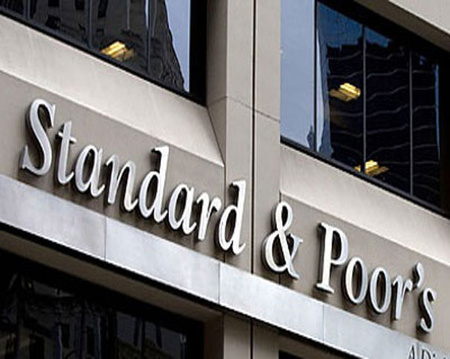Baku, Azerbaijan, Mar.14
By Elena Kosolapova - Trend:
Standard & Poor's Ratings Services affirmed its 'BBB' long-term foreign and local currency sovereign credit ratings on the Republic of Kazakhstan, the rating agency reported. The outlook is negative.
At the same time, S&P affirmed the short-term foreign and local currency sovereign credit ratings on Kazakhstan at 'A-2'. The agency also affirmed the Kazakhstan national scale rating at 'kzAA+'.
"The ratings on Kazakhstan are supported by the government's net asset position and strong fiscal performance, which follows recent years of fiscal and external surpluses, supported by the country's large natural resource endowment. The ratings remain constrained by our view of Kazakhstan's limite institutional and governance effectiveness, owing to the highly centralized political environment characterized by a lack of clarity about eventual presidential succession. The moderate level of economic development (GDP per
capita is estimated at $13,000 as of year-end 2014), limited monetary policy flexibility, and the high dependence on the hydrocarbon sector also constrain the ratings," S&P said.
President Nursultan Nazarbayev announced that he will stand in the April 26, 2015, early presidential election. The rating agency thinks the election, in which the president will very likely be elected for another term, will help maintain near-term political stability. Indeed, Kazakhstan has benefitted from one of the most politically stable environments in the region, S&P said. The renewed mandate for the president is expected to better position the government to implement more difficult economic reforms to offset the sharp economic slowdown.
Kazakhstan's economy depends heavily on the oil sector, according to S&P. It accounts for an estimated 20-30 percent of GDP, over 50 percent of fiscal revenues, and 60 percent of exports. The rating agency expects GDP growth to slow to 1.5 percent in 2015, from 4.3 percent in 2014, primarily due to low oil prices. The agency also expects that further tenge depreciation and inflation will subdue GDP in dollar terms this year. S&P also expects Kazakhstan's oil production will decrease slightly during 2015-2016; it expects output in 2015 of 80.5 million tons, from 81.8 million tons previously. This follows several years of relatively flat oil production, due to delays at the large offshore Kashagan project. The agency does not foresee any significant production gains from the Kashagan oil field until 2018 and notes that Kashagan has had years of delays and cost overruns.
"When the field will come back on line and reach peak capacity of its first phase of production remains uncertain, but it should eventually increase Kazakhstan's oil output by 20 percent," S&P said.
S&P also notes that the growth outlook is also dampened by the expected impact on consumer demand--the key growth driver in recent years--from currency devaluation, fiscal consolidation (which will include cuts to current and capital expenditures), lower-than-expected exports of other raw materials, and external factors, such as the recession in Russia.
"Indeed, Kazakhstan is dealing with the double shock of lower oil prices and the recession in Russia," the agency said.
Kazakh government plans to maintain the maximum limit on the annual transfer from the National Fund of the Republic of Kazakhstan to the central government budget at $9.2 billion, despite lower oil revenues.
"The drawdown of NFRK funds and repatriating the proceeds will weaken Kazakhstan's international investment position. We expect modest current account deficits over the rating horizon through 2016, at less than 4 percent of GDP in 2015, but we expect reserves to decline only marginally, as they will be supported by financial account inflows from foreign direct investments and the expected repatriation of NFRK assets, as part of government stimulus spending," the agency said.
S&P believes the National Bank of Kazakhstan (NBK) will face challenging demands on several fronts in 2015. On the one hand, it may be called on to support financial stability in conjunction with the government's efforts to address legacy problem loans in the banking sector. On the other hand, it could have to facilitate an external adjustment through the exchange rate. Similarly, the NBK's policy may be to not counteract the government's counter-cyclical fiscal policy, yet it may also need to keep liquidity conditions tight to support the tenge. That said, the NBK and the president have both recently announced that the exchange rate will remain stable as long as oil prices remain above an annual average price of $50/barrel.
The negative outlook on the long-term ratings reflects S&P view of increasing risks to Kazakhstan's external, fiscal, and monetary profiles. The agency could consider lowering the long-term ratings if Kazakhstan's external and fiscal positions deteriorate beyond its current expectations, even assuming a recovery in oil prices in 2015-2016. The ratings could also come under pressure if S&P observes a deterioration in monetary policy effectiveness or in reserve levels as the NBK faces its many challenges.
The agency could consider revising the outlook to stable if Kazakhstan's policymaking and institutional frameworks became more transparent and predictable. S&P would also view enhanced implementation of the structural reform and diversification agenda, as well as efforts to increase monetary policy flexibility, as positive for the ratings.
Follow the author on Twitter: @E_Kosolapova






